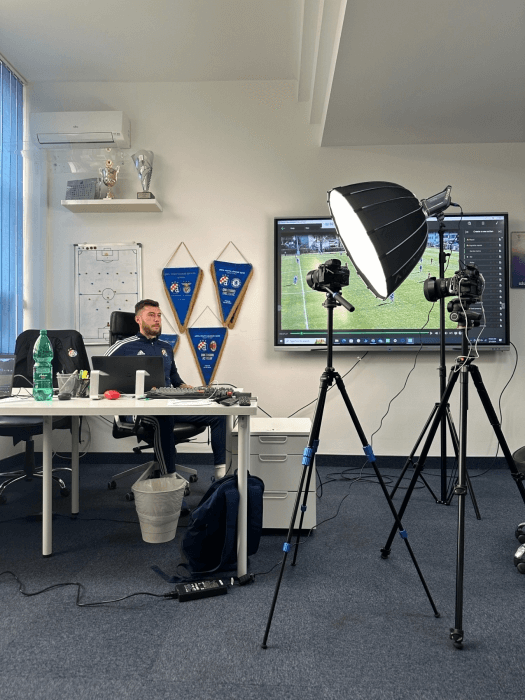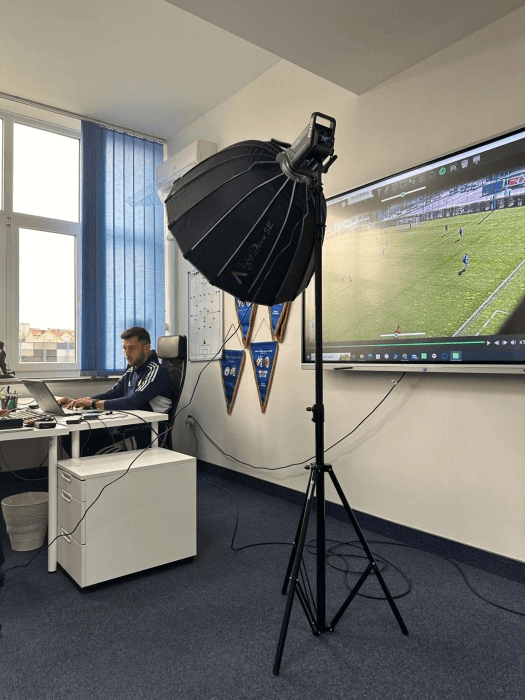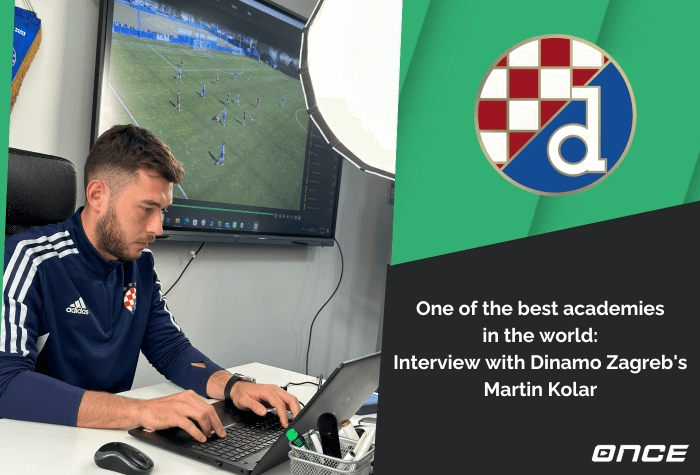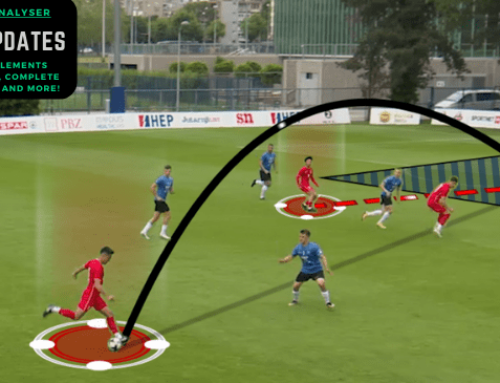What a chance to take an in-depth look behind the walls of one of the finest football academies in the world!
Once Sport is proud to present an exclusive interview with Martin Kolar, a video analyst at the GNK Dinamo Zagreb Academy.
That’s right, that’s the Academy that created absolute top-level football stars, such as Luka Modrić, Mateo Kovačić, Joško Gvardiol, Dani Olmo…
What is the secret? How is Dinamo Zagreb capable of constantly producing players like that?
Well, you are in for a treat, because you can learn about the use of video analysis in the Dinamo Zagreb Academy from Martin Kolar. You can either watch the interview below or keep on reading!
Hey Martin, what does your process of analyzing a match look like?
We have three different types of analysis: it’s the match, opponents, and training analysis.
For the match analysis, I download the game that I’ve seen and I try to make an analysis as soon as possible. I try to follow the demands of the whole school.
I try to follow demands for the different positions from the coach, and then by those demands I try to make small cuts, or even the bigger ones.
When I show video cuts to my coach, he tells me what he wanted in that situation to happen. Based on that, I can make either a drawing or I can find similar situations that happened in the game. We can then make a comparison with the situation in which the demand happened and the situation in which the demand didn’t happen.
How do you make sure that players easily understand the analysis?
We need to have clear demands for the players. The instructions that we give them by the pitch need to be exact.
Of course, when we do video analysis, we try to make demands so clear, in a way that the players can adapt themself to situations on the pitch.
We try to show them a couple of different situations with the same demand for different positions.
Of course, to make it fully understandable to them, we try to draw things that they did or didn’t do on the video.
It is sometimes hard for the players to understand what we want, but when we show and draw that to the players, they have a 100% understanding of the situation.
Could you give us an example of a demand for your players?
For example, when the right back has the ball, or the right wing has the ball, we try to make an early cross with the opposite attacking midfielder attacking between the central defender and their right back.
The opposite winger is attacking the back from their right back, and the striker is attacking the space between central defenders. Players need to fill their positions in the box for an early cross, especially in the situations in which we find ourselves with the low blocks. That is the most effective thing to break the low block.

How does video analysis help in preparing for upcoming opponents?
As much as we want to follow our demands, we need to adapt to the opponent. Not in the 100%, but at least 20-30%. We like to see do they play with two strikers, do they play with two attacking midfielders, do they play with two defensive midfielders, do they play with three in the back, how they make build-up, how they make transitions, attacking transitions, the defensive transitions…
We especially try to focus on the set pieces, such as attacking corners or defensive corners. Based on this, we try to make some variations of, let’s say, build-up.
When they defend with two strikers and we try to adapt ourselves to make space for our defensive midfielder to open up, he needs to have the timing of opening up to make the pass on the third player.
This is just one example of how we want to adapt ourselves to the opponent.
Could you give our readers an example of how video analysis specifically helped in a match?
There was one situation from the game where we attacked a lot and we couldn’t score. I think it was the 35th minute, it was our first or second attacking corner. We made a play with a heel pass and a back pass on the penalty area, which we trained on the day before, and we scored!
We analysed that exact situation, and we saw that they are guarding man-to-man in the box, and if we can draw them from their positions, we can make space on the penalty area.
This helped us because we opened up their low block, and eventually the match ended 6:1 for us. Video analysis directly helped us to win the game!
What is more important in youth football: statistical analysis or video analysis?
Data and video analysis are important as equals in football generally, but in youth football, video analysis is more important.
For daily work, video analysis is important as a way to show your players where they can make progress.
Also, when you are presenting the player, let’s say to the staff or to the board, you need to have data. But, if you don’t have a video analysis of him, the data can just be deceiving.

What is the best way to criticize a player – in front of the whole team or privately?
Depends on the situation. If you have a player who is constantly making the same mistakes, or his behavior is problematic for a prolonged period, you can try to criticize him in front of the whole team.
But if you are planning to criticize a situation that just happened once or twice, you should call him on the side and let him know in a private conversation. If you attack a player for one thing in front of the whole group, his self-esteem will immediately decrease.
Of course, you don’t want that.
What is your process for individual player analysis?
We try to implement individual analysis more in the preseason, in private conversations, or in group conversations.
For example, we call all of our strikers and then we show them our demands for particular situations. Then, on the pitch or during the training, we try to individually show them what they need to be doing.
After a couple of matches, I, as a video analyst, or someone like the assistant coach or the head coach call the players and say: “Okay, we showed you four demands, and you did two of them, how can we improve you to enable you doing another two of our demands?”
You need to be clear in that advice for your players.
Individual analysis is primarily done in the preseason, for us. Of course, it’s also done during the season, but less. As the season is coming to an end, we are trying to decrease a lot of the information because the players are tired. They stop accepting information as well as they did in the preseason.
Knowledge as a treasure
Thank you, Martin, for your time and effort. Your knowledge can now help coaches everywhere. In a niche in which it’s usually hard to find quality sources, your interview is a treasure.
We are proud of having you as a Once Video Analyser user, and we are eager to continue to be a part of the growth of Croatian football and enjoy some new success stories.
Let us know if you’d like to see more content like this!
If you are reading this and you think you could use a better video analysis program, or you haven’t tried video analysis yet, browse around our website www.once.de. If you like what you see, just download the completely free trial of Once Video Analyser!
You can get a video tutorial free of charge as well. Simply contact us at [email protected] to schedule a call so we can show you all of the program features and answer any questions you may have.
Go ahead and try it, cause Once you try it, you’ll love it!
Try Once Video Analyser for free by clicking on the button below!






